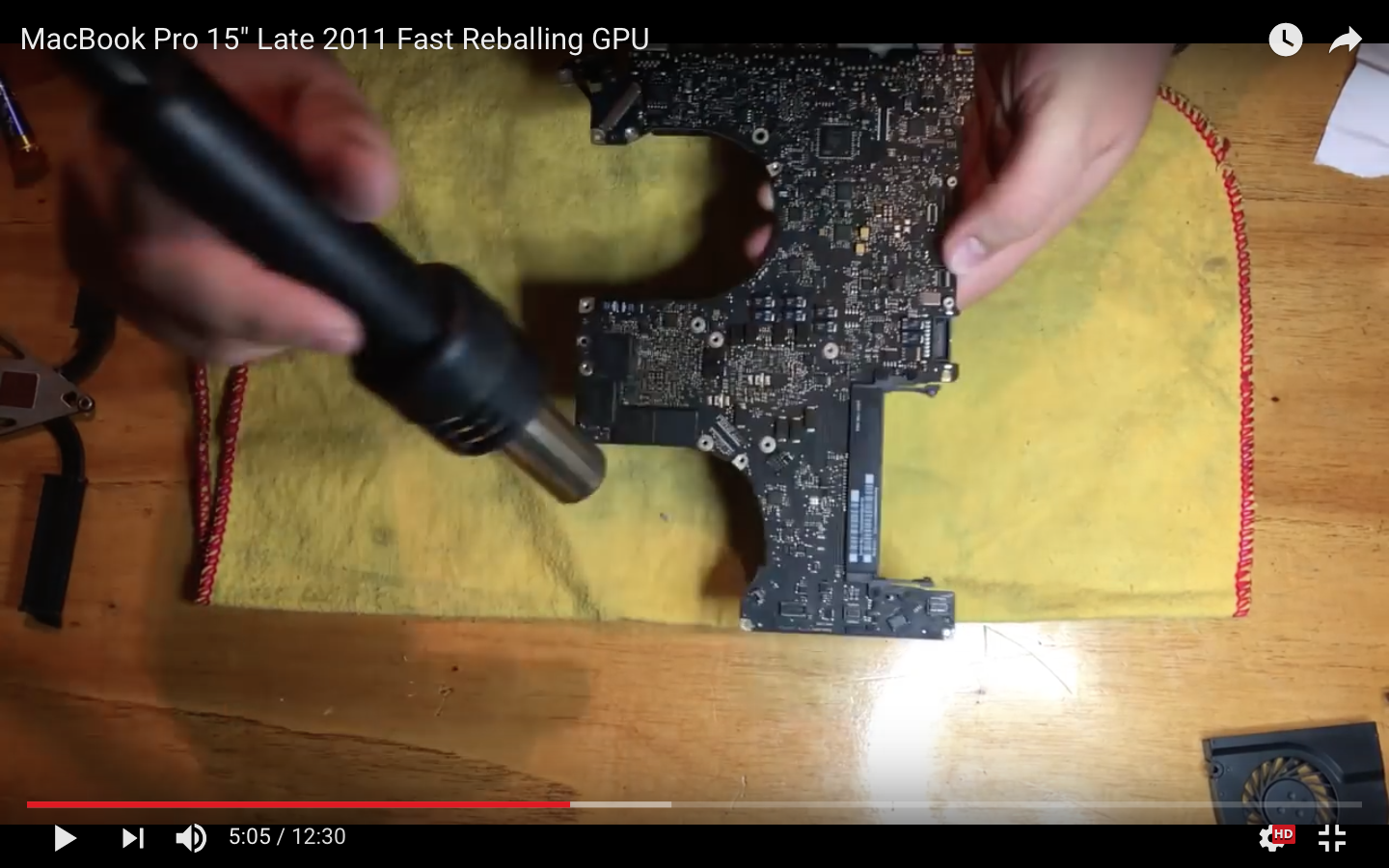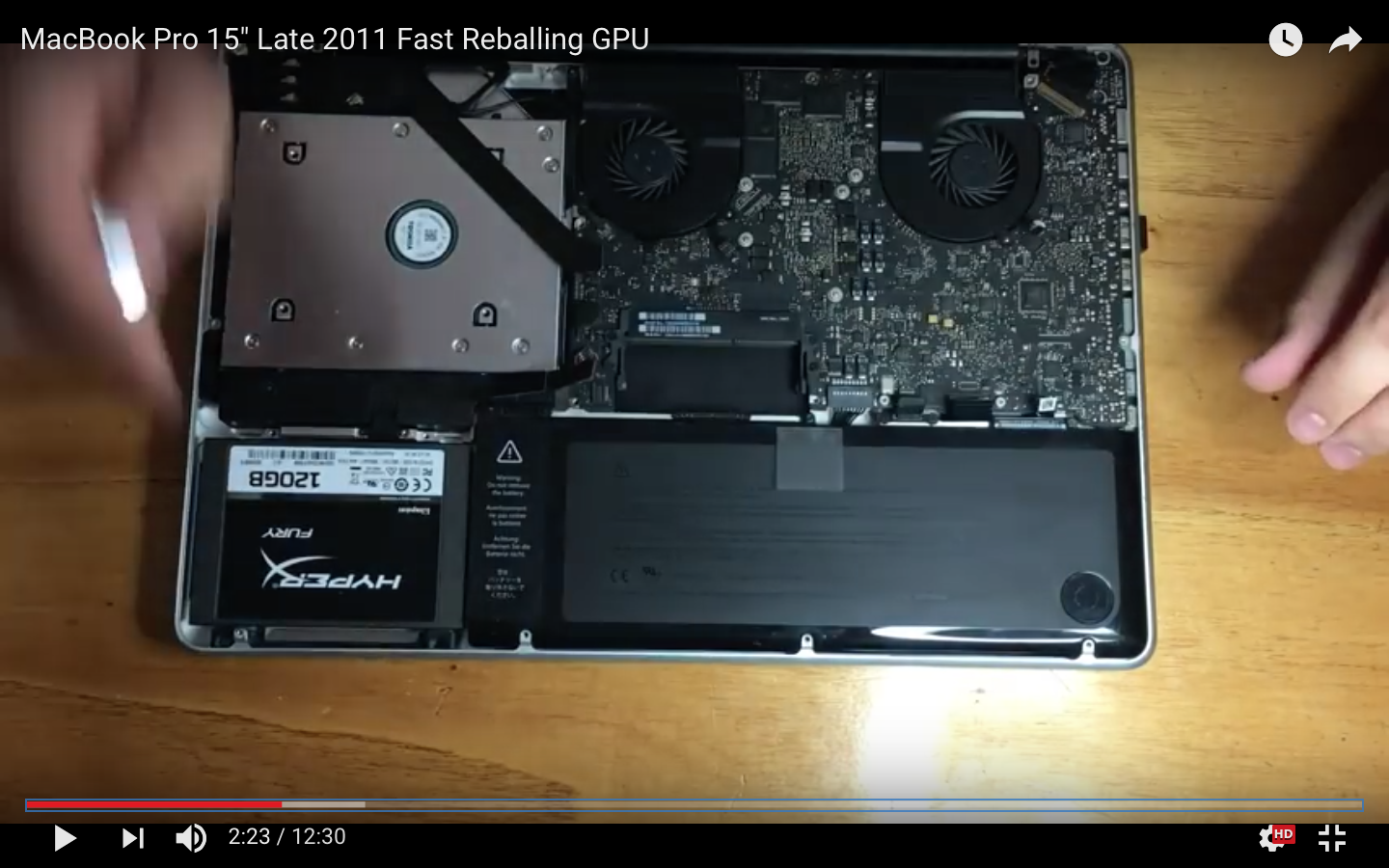I just repaired a faulty MacBook Pro GPU in about 20 minutes.
I did exactly what this guy in the YouTube screenshots did: apply heat with a 350W heat gun for about 5-7 minutes.
But I didn't bother taking the whole dang motherboard out; I just left it in and applied the heat from the other side.
What this does: during manufacturing, after the chips are robotically precision-placed on these motherboards, they're gently run through a solder bath. The hot solder in the bath sticks to the exposed metal connectors on the circuit board and the chips' pins (connectors), forming a connection.
This connection is usually solid and good to go for years, but sometimes, inevitably, the inevitable inevitably occurs: the solder connection weakens and becomes electrically unstable (becomes a bad connection). There are hundreds of pins on these chips, and so hundreds of opportunities for this to happen.
But the chips *themselves* are quite reliable.
So nowadays when something goes bad in a computer, it's almost always not really a bad *chip* malfunctioning, but a bad *solder connection* that's got tiny, imperceptible cracks in it which you could probably only see with a microscope, but which are causing electronic havoc.
The chips' connecting pins (looking like bent legs) simply rest on the surface of the printed circuit board, and this can sometimes make for connections which expand and contract over time due to being heated and cooled.
The solution: heat the board, solder, and connecting pins back up again. GENTLY. CAREFULLY.
5-7 minutes with a heat gun is all it took. I let it cool for another 15 minutes.
Hopefully the fix will stick, but I have to thank this nice person for uploading this helpful video, during which they gave me the idea for just very carefully heating the board up from the other side, rather than pulling it out (this can cause other problems, because you have to then pull out all sorts of connectors and little fiddly bits and ribbon cables that weren't really designed to be disconnected much). They flipped the board over during the reheating (they're calling it "re-balling" for some unknown reason), and I thought this was a bad idea: the solder's hot and the graphics chip could slide around or fall off the board.
Then I realized that if you *don't* disassemble the whole motherboard to access the GPU, it's still being held firmly down by lots of screws and heat sinks on the other side.
So why not just try heating the board from the other side? Heck, if it doesn't work you can always disassemble the whole thing. But if it's not necessary, why go to the trouble?
It worked a treat. I'm typing this on a computer that an hour and a half ago would not boot at all, because the computer looks for the GPU and requires it to function before it'll boot all the way.
If your MacBook Pro won't boot up and has the horizontal lines, don't despair just yet. Just unscrew the bottom cover, grab a heat gun, and heat it up for about 5-7 minutes in the exact same area you see below (only don't pull the whole motherboard out, just heat it up from the back in the area between the two black cooling fans, shown in the screen shot).
It might just work. I'd not use a hair dryer, as a heat gun is smaller and easier to direct; you wanna just heat up the area specific to the GPU, nothing else.


MacBook Pro 15" Late 2011 Fast Reballing GPU - YouTube